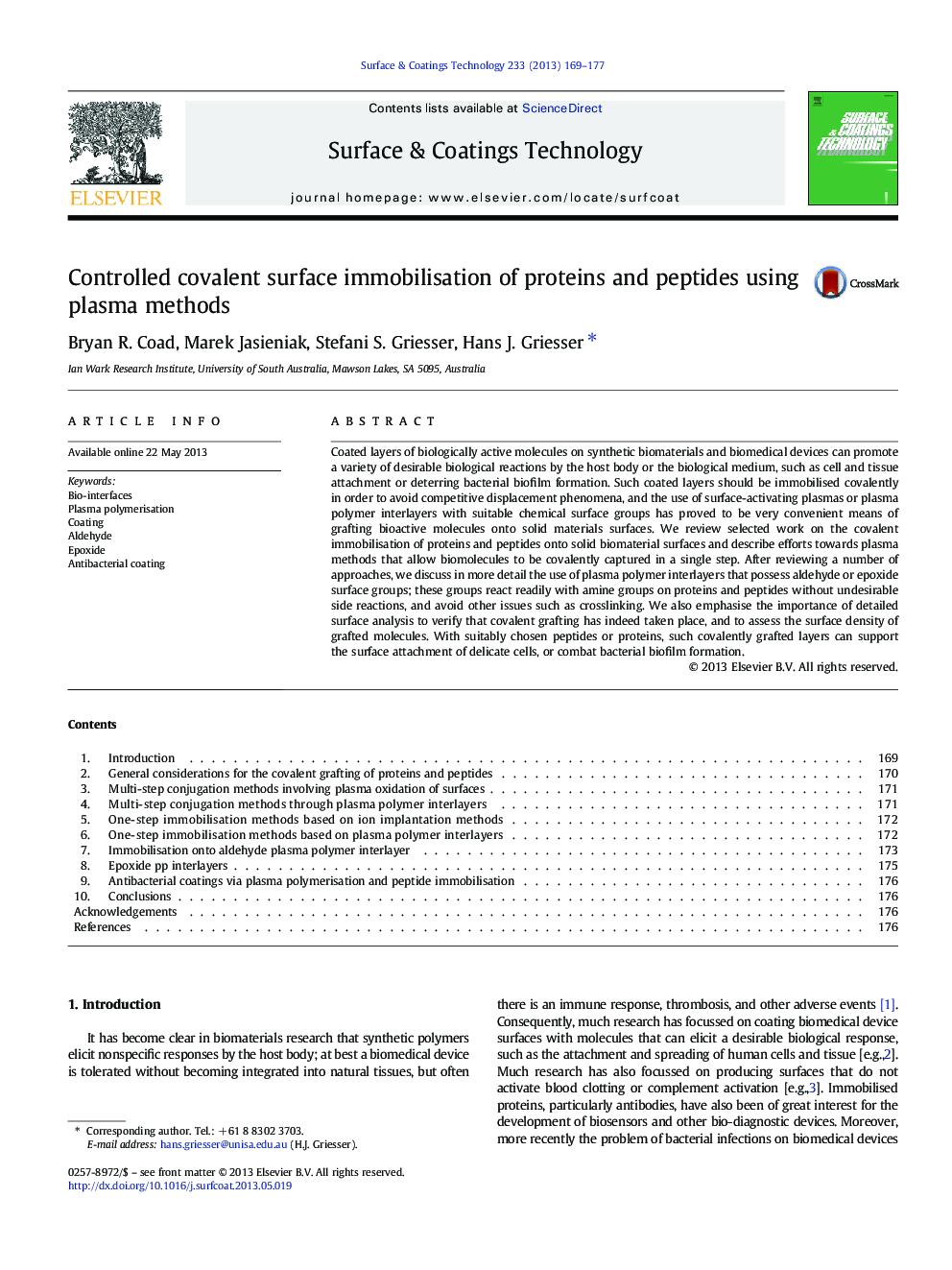| Article ID | Journal | Published Year | Pages | File Type |
|---|---|---|---|---|
| 1657676 | Surface and Coatings Technology | 2013 | 9 Pages |
•Proteins and peptides can be immobilised onto aldehyde and epoxide plasma polymers.•Gentle reaction conditions apply to avoid denaturation of proteins.•Such bio-functional coatings can be applied onto a wide range of materials.•Grafted proteins and peptides support cell attachment and antibacterial activity.
Coated layers of biologically active molecules on synthetic biomaterials and biomedical devices can promote a variety of desirable biological reactions by the host body or the biological medium, such as cell and tissue attachment or deterring bacterial biofilm formation. Such coated layers should be immobilised covalently in order to avoid competitive displacement phenomena, and the use of surface-activating plasmas or plasma polymer interlayers with suitable chemical surface groups has proved to be very convenient means of grafting bioactive molecules onto solid materials surfaces. We review selected work on the covalent immobilisation of proteins and peptides onto solid biomaterial surfaces and describe efforts towards plasma methods that allow biomolecules to be covalently captured in a single step. After reviewing a number of approaches, we discuss in more detail the use of plasma polymer interlayers that possess aldehyde or epoxide surface groups; these groups react readily with amine groups on proteins and peptides without undesirable side reactions, and avoid other issues such as crosslinking. We also emphasise the importance of detailed surface analysis to verify that covalent grafting has indeed taken place, and to assess the surface density of grafted molecules. With suitably chosen peptides or proteins, such covalently grafted layers can support the surface attachment of delicate cells, or combat bacterial biofilm formation.
